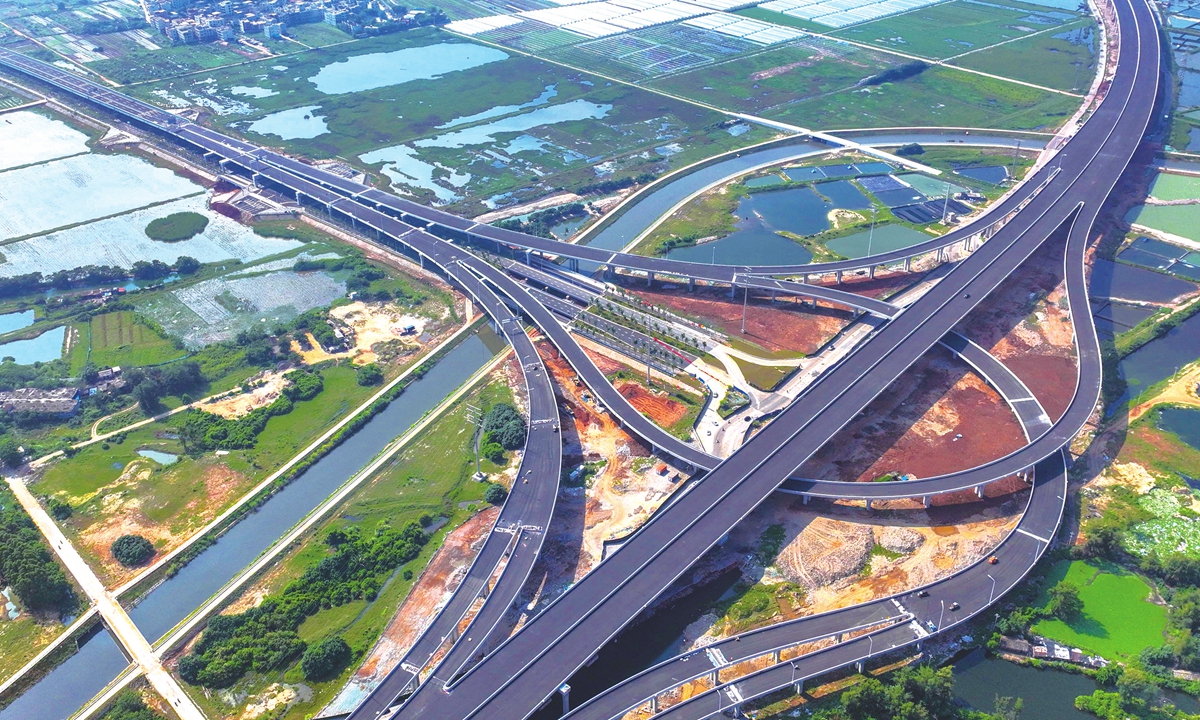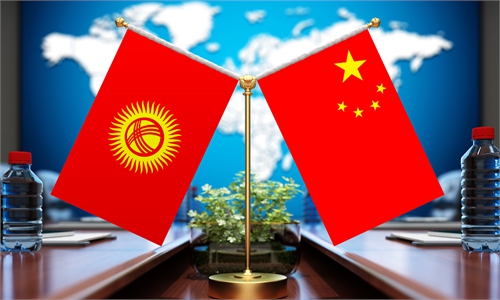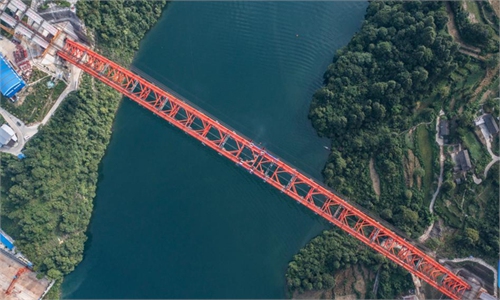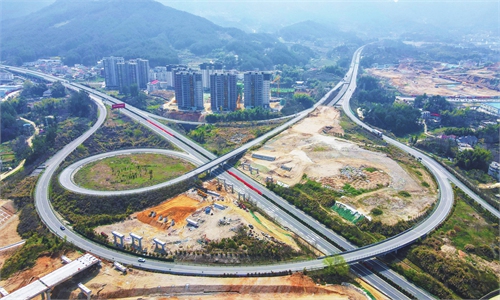
The Haikou part of the G15 highway in South China's Hainan Province, which is still under construction, is seen on September 14, 2022. It is a major infrastructure project of the Hainan Free Trade Port, and the only channel connecting the expressway in Hainan Province to the national expressway network. Photo: cnsphoto
From urging the start of construction projects to creating a preferential policy environment for new-energy vehicle (NEV) development, China's National Development and Reform Commission (NDRC) has unveiled a basket of policies to further propel the economy as pressure lingers.
Experts said that one highlight of next-stage economic stimulus work would be to implement the construction of approved infrastructure projects, while boosting consumption will be another focus, judging by the current economic situation.
At a press conference on Monday, Meng Wei, a spokesperson for the NDRC, said that it would adopt forceful measures to speed up project construction following the first batch of policy-based development financial tools worth 300 billion yuan ($42.81 billion) as soon as possible.
Meng also said that China would screen and recommend projects, speed up capital investment, urge local governments to seize the window and push the construction of projects as soon as possible.
China decided to employ 300 billion yuan in financial instruments during a State Council executive meeting in late June. The funds were designed to replenish the capital for major projects or to provide financing for projects funded by special-purpose bonds. In August, the Chinese government doubled the quota of these instruments.
Yue Xiangyu, a research fellow of the China Economic Thought Development Research Institute under the Shanghai University of Finance and Economics, said that instead of speeding up the approval of fixed-asset investment projects, the focus will be on implementing those already approved.
"China's economic indicators for August looked bright, but the biggest reason behind the pick-up was last year's low base, instead of a genuine recovery. In particular, data for the infrastructure and property sectors showed that many projects hadn't moved beyond the approval stage, and infrastructure had not been fully functional in lifting the economy as the market anticipated," Yue told the Global Times on Monday.
China's infrastructure investment surged 14.1 percent in August, compared with 9.1 percent in July, but property investment slipped by 13.8 percent.
Besides investment, consumption is another highlighted area where authorities are likely to mount stimulus policies. Meng said that the NDRC is accelerating the study of the launch of policies and measures to create new consumption scenarios and boost a quicker recovery.
Chen Jia, an independent research fellow on international strategy, said that consumption's economic contribution has been rising continuously, which is why the authorities are mounting efforts to lift the sector further.
"Seizing the consumption sector is like seizing the locomotive of the economy," Chen told the Global Times, adding that unexpectedly strong consumption further proved the effectiveness of earlier-stage consumption stimulus policies.
In particular, the NDRC revealed its plans for the NEV sector, such as optimizing the policy environment to make it more favorable for development, as well as encouraging global cooperation.
According to Chen, if China can promote application scenarios for autonomous driving, many connected industries could "explode," including next-generation communication networks and new-energy batteries.
"Considering that China has broken the 14-nanometer chip manufacturing process bottleneck, along with its huge population base and urbanization-related demand, the potential for NEV application scenarios is limitless. The authorities are not just looking at boosting NEV consumption. They're also eyeing the development potential of future industrial clusters," Chen noted.
Cong Yi, a professor at the Tianjin University of Finance and Economics, also said that China has launched policies with multiple forms that will resolve market blockages and ease the difficulties faced by small enterprises. Policies will continuously be rolled out in those directions, he said.




